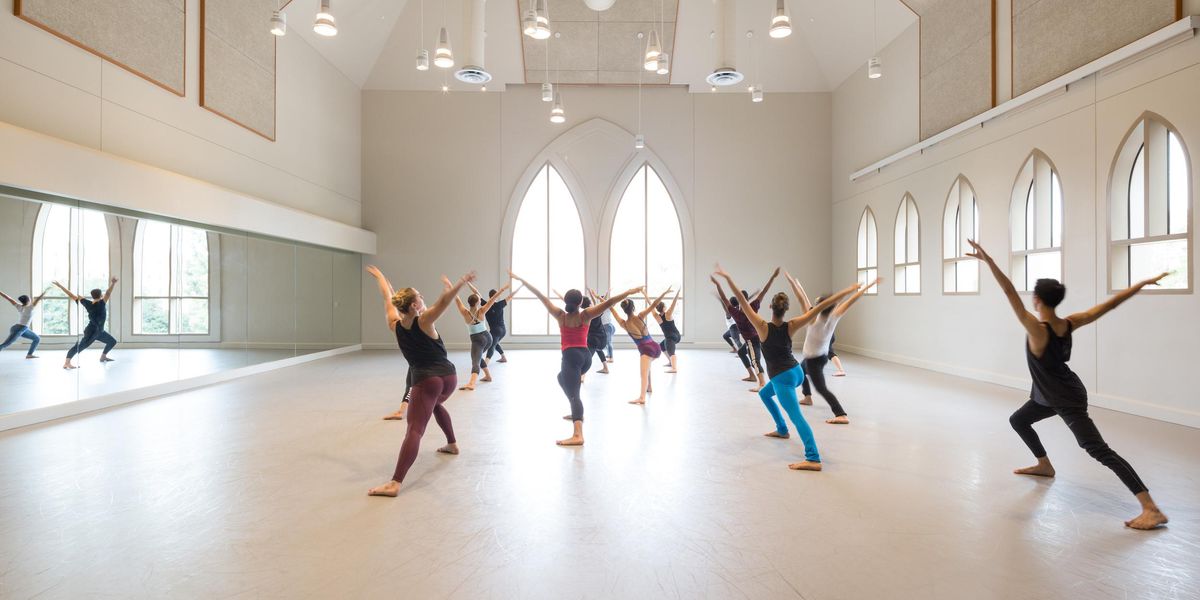We Need to Talk About Non-Consensual Audience Participation
Some of my favorite experiences as both an audience member and a dancer have involved audience participation. Artists who cleverly use participatory moments can make bold statements about the boundaries between performer and spectator, onstage and off. And the challenge to be more than a passive viewer can redefine an audience’s relationship to what they’re watching. But all the experiences I’ve loved have had something in common: They’ve given audiences a choice.
A few weeks back, I had a starkly different experience—one that has caused me to think deeply about how consent should play into audience-performer relationships.
The premise for Boris Charmatz’s 10000 Gestures is that the dancers literally perform 10,000 gestures, each one distinct and never repeated. About three quarters of the way through the piece, they begin counting in French, loudly and somewhat frantically. This frantic energy then moves offstage, as the dancers begin to infiltrate the audience, crawling into the seats and all over the viewers.
To say nothing of how crawling on top of unexpecting audience members might be violating, it was inarguably dangerous. One dancer, trying to climb from the orchestra seats up to the balcony, shattered a light with her foot and sent shards of glass flying into the audience. The performers, slippery with sweat, haphazardly used audience members as weight-bearing surfaces. One dancer screamed at me to give her my hand to bear down on, as if I owed it to her. Across the orchestra, I saw an audience member being lifted above the heads of several performers. I’m guessing she wasn’t asked if that was something she’d be interested in doing.
Having strangers touch you without asking is one thing. But before venturing into the audience, the cast—many of whom were barely clothed—were touching their genitals onstage. This was hard to forget as they put their hands on our bodies, and inadvertently shoved said genitals into our faces.
Full disclosure: This was at the end of a long, difficult week, where I—and many other women in America, and I would assume the audience of this show—had felt violated as I watched the hearings for now–Supreme Court justice Brett Kavanaugh. Could that have contributed to why having strange men touch me without asking and put their crotches in my face was so upsetting? Absolutely.
But for many people, these kinds of interactions would be unacceptable regardless of the circumstances. Audience members with disabilities shouldn’t have to worry about whether performers are going to put them in danger or force them to do things they aren’t able to do. (Especially at a venue that calls itself accessible.) Those who’ve experienced trauma shouldn’t have to relive it by having strangers aggressively invade their personal space. No one should have to dodge getting feet or genitals in their faces. And some people simply don’t want to be touched by strangers for reasons they shouldn’t have to explain.
I don’t write this from a place of prudishness, or from a desire for dance to be less experimental, or take fewer risks. Nor do I dispute that coming into close contact with the performers probably enhanced the experience for some people in the audience. Instead, my problem with 10000 Gestures—and other works that take audience consent for granted—is that I believe theaters should be spaces where people of all physical abilities and backgrounds can feel safe and respected.
It’s also a question of why choreographers use audience interaction. What purpose is it serving, and how is it deepening the work? Just like artists might consider whether using violence or nudity is truly necessary and earned, content that puts audiences at physical risk shouldn’t be included casually. It especially shouldn’t be used as a gimmick.
This doesn’t mean audiences shouldn’t be challenged or uncomfortable, or that audience participation can only take the often-clunky form of asking for volunteers. In other settings, I’ve had performers quietly whisper in my ear: “I’m going to sit on your lap, is that okay?” That simple question marked the difference between feeling violated and feeling like I was in on some delightful inside joke. Being explicit about any potentially dangerous or triggering content before audiences commit to attending a show—through marketing materials or the ticket-buying process—is another simple way of gaining consent. There was no mention of this content in any materials for 10000 Gestures, and I’m not sure whether I would have attended it had I been told what it would involve. But I should have been able to make that choice.




